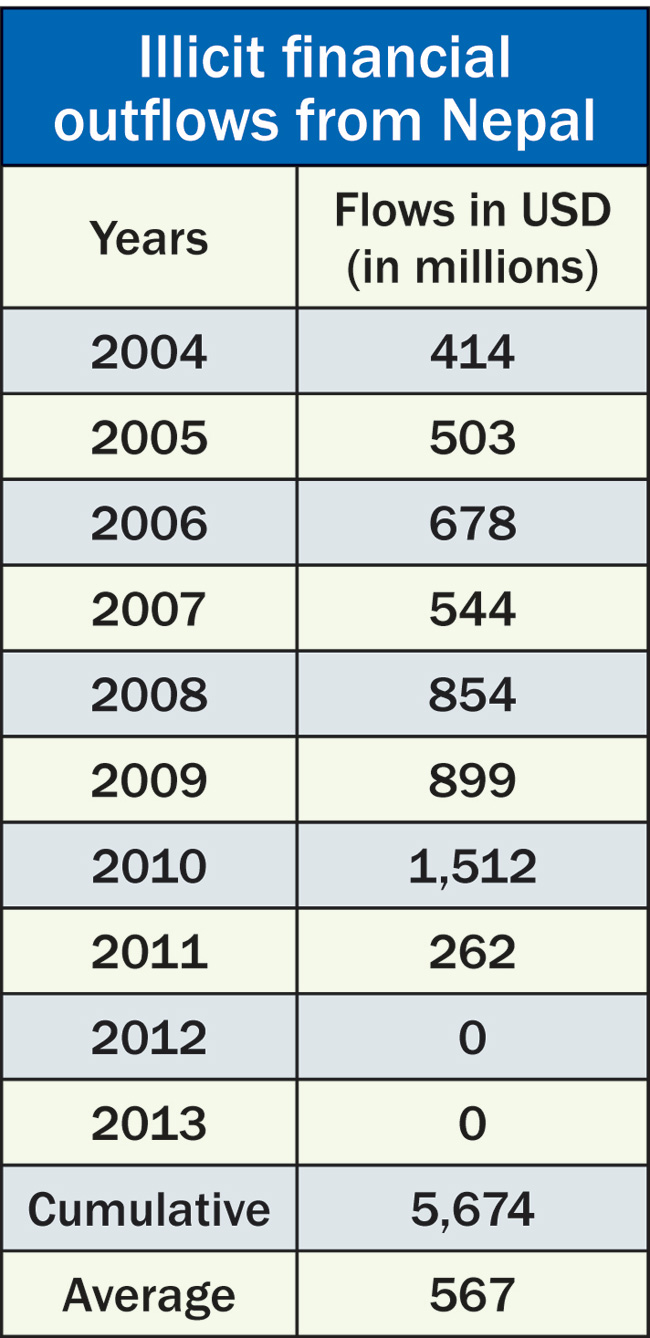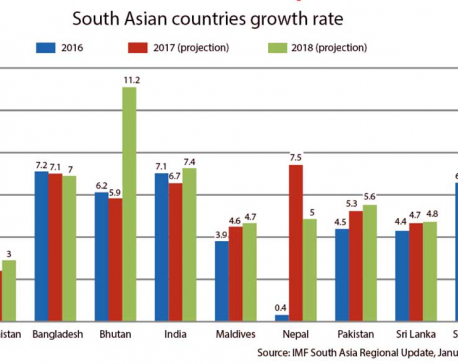
OR
Nepal sees $5.7b illicit capital outflow in decade: Report
Published On: January 16, 2017 06:44 AM NPT By: Republica | @RepublicaNepal

KATHMANDU, Jan 16 : Nepal witnessed illicit outflows amounting to $ 5.674 billion in the last 10 years, according to a report published by Global Financial Integrity, a US-based think tank.
On average, $ 567 million has flown aboard from Nepal annually. A recently published report titled ‘Illicit Financial Flows from Developing Countries: 2004-2013’ states that Nepal saw its highest such capital outflow, $1,521 million, in 2010. The lowest of $262 million was in 2011.
Nepal, according to the recent report, is ranked 85 out of 149 countries surveyed. In its previous report ‘Illicit Financial Flows from Developing Countries: 2001-2010’ GFI had stated that a total of $ 8.01 billion went out from Nepal, making an average of $ 801.4 million annually.
Economists blame the prolonged political transition and lack of a business friendly environment for the increased capital outflow. They are worried that domestic investment could worsen if the growing tendency of capital outflow is not checked in time.
“Prolonged political transition, lack of an investment friendly environment, and no guarantee of profit due to low productivity are encouraging the capital outflow,” said economist Madan Kumar Dahal.
Dahal, a retired Tribhuvan University professor, blamed the government for failing to safeguard transparency and the right to property. “There is no clear and pragmatic national government economic policy,” said Dahal.
Economists believe such unchecked illegal outflow of capital could have negative consequences on macroeconomic management and in curbing corruption. Asked about the huge outflow of money in 2010, economist Dahal said, “The massive capital outflow is happening through informal channels like hundi and hawala. It requires intensive research to conclude why huge amounts of capital went out of the country, particularly in 2010.”
GFI measures trade mis-invoicing, using the Gross Excluding Reversals (GER) methodology which highlights gaps between a country’s reported exports and imports vis-à-vis the rest of the world.
You May Like This

IMF sees Nepal an exception to South Asian economic growth
KATHMANDU, Jan 21: The International Monetary Fund (IMF) has said that growth is expected to accelerate or remain broadly stable in... Read More...

Investors intend to pour $ 13.52 b into Nepal
KATHMANDU, March 4: Investors both foreign and domestic have shown keen interest in investing in Nepal. They signed letters of intent... Read More...

IMF mission sees 'limited impact' of Indian demonetization in Nepal
KATHMANDU, Jan 24: Amid concerns that the decision to scrap high value Indian banknotes by the Indian government is also likely... Read More...







Just In
- Rain shocks: On the monsoon in 2024
- Govt receives 1,658 proposals for startup loans; Minimum of 50 points required for eligibility
- Unified Socialist leader Sodari appointed Sudurpaschim CM
- One Nepali dies in UAE flood
- Madhesh Province CM Yadav expands cabinet
- 12-hour OPD service at Damauli Hospital from Thursday
- Lawmaker Dr Sharma provides Rs 2 million to children's hospital
- BFIs' lending to private sector increases by only 4.3 percent to Rs 5.087 trillion in first eight months of current FY












Leave A Comment